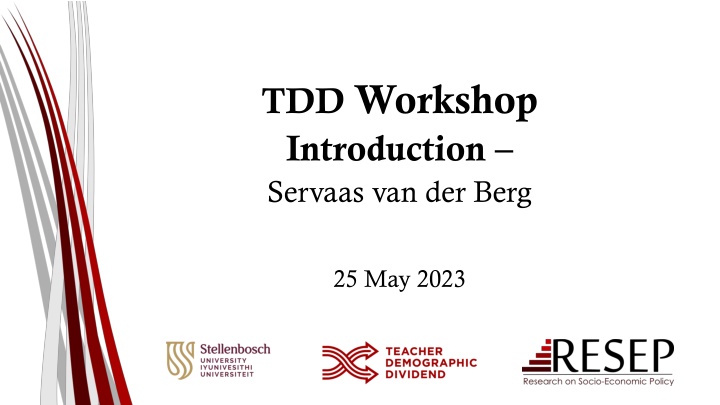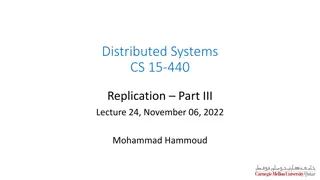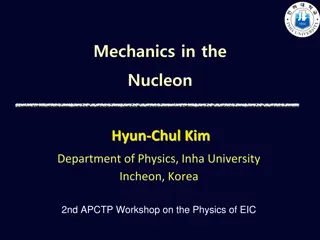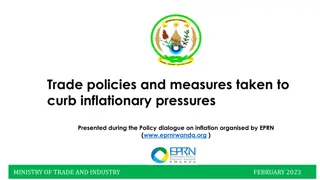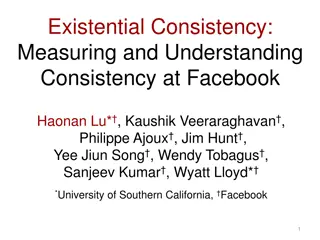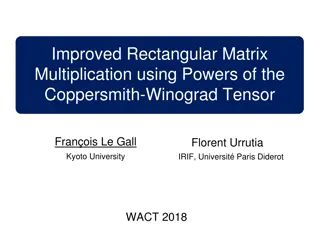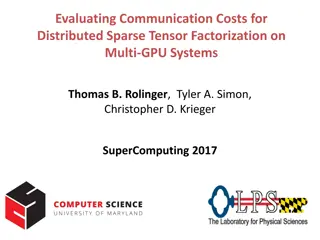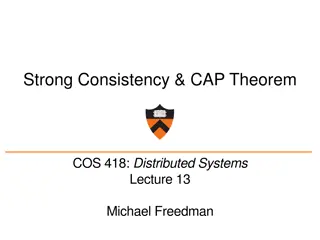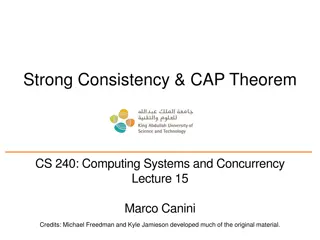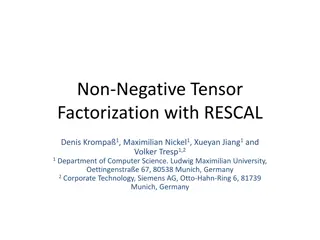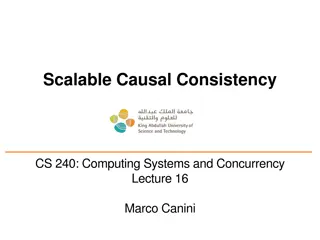Extending Inflationary Consistency for Tensor Modes
This study delves into exploring and evaluating the inflationary consistency relation for tensor modes, focusing on CMB data alone and in conjunction with the Big Bang Observer. The research delves into traditional and improved extrapolation methods to enhance the understanding of cosmological phenomena.
Download Presentation

Please find below an Image/Link to download the presentation.
The content on the website is provided AS IS for your information and personal use only. It may not be sold, licensed, or shared on other websites without obtaining consent from the author.If you encounter any issues during the download, it is possible that the publisher has removed the file from their server.
You are allowed to download the files provided on this website for personal or commercial use, subject to the condition that they are used lawfully. All files are the property of their respective owners.
The content on the website is provided AS IS for your information and personal use only. It may not be sold, licensed, or shared on other websites without obtaining consent from the author.
E N D
Presentation Transcript
TDD Workshop Introduction Servaas van der Berg 25 May 2023
Demand: Demand: Disturbing ageing of teacher population What we discovered in DHET project on teacher supply & demand Supply: Supply: Who study to become teachers? Long lag between entry into university and obtaining a degree Many do not enter public teaching Reserve stock
Factors affecting aggregate demand projections Fertility Mortality Provincial and international migration Demography & Demography & learner age learner age Age structure Academic ambition Economic situation Opportunity costs Alternatives: Labour market TVET college Official policy of LE ratio, posts Provincial practice Enrolment Enrolment Learner-educator ratio
Factors affecting supply School performance Availability of finance Work options Choice to become a teacher Choice to become a teacher Composition (level, subjects, home language, full- or part-time) Output from universities Output from universities Teaching vs non-teaching Labour market conditions SA or abroad Public or private schools Location, school type, resources, SES Preferences of graduates Preferences of graduates Reserve stock Reserve stock How large is this stock, and is it being exhausted?
Matric performance of 2013 matric cohort enrolling for BEd or other degrees (in 2014-2016) BEd (18% of all degree enrolments) 14 735 Degrees enrolled for MANY TEACHERS DID NOT PERFORM VERY WELL AT SCHOOL - especially in Maths 65 438 Other degrees 63% Average matric mark BEd 68% Other degrees 20% % scoring 50%+ for Maths BEd 54% Other degrees
Outcomes of 2010-11 full-time and part-time BEd first-time enrolled students in year 8 Graduated but did not join PERSAL Graduated and joined PERSAL Share of BEd Share of BEd graduates graduates Did not graduate Graduated 25% 52% 75% 48% 21% 27% 54% 21% Full-time Part-time 65% 35% Cumulative share of 2010-2011 first-time entering full-time BEd students Graduated Graduated and joined PERSAL 100% Completed degree 100% Indian White 80% Joined PERSAL 80% Black Coloured Black Indian White 60% 60% 40% 40% 20% 20% 0% 0% 3 4 Years since enrolled 5 6 7 8 3 4 Years since enrolled 5 6 7 8
Factors affecting costs Age and seniority of teachers: Age and seniority of teachers: Retirement/resignation vs new teachers Inflation & public sector wage bill Post-levels Acting vs actual appointments Notch increases Notch increases
THANK YOU SERVAAS VAN DER BERG Research on Socio-Economic Policy (Resep) Stellenbosch University svdb@sun.ac.za https://resep.sun.ac.za/
